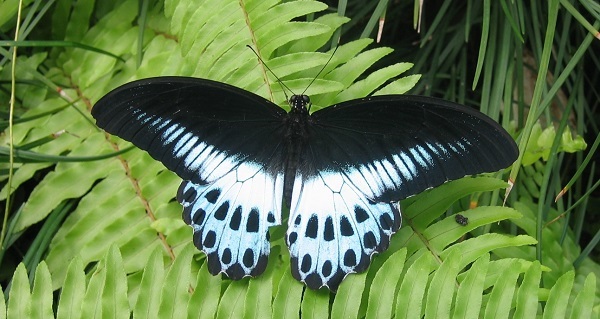A new initiative by a city-based NGO, OASIS, hopes to attract butterflies – and colour – back to the city.
by The Editors | editor@themetrognome.in
In a city starved of green spaces and facing greatly diminished nesting areas for birds, any initiative that strives to welcome our feathered friends into the hustle and bustle of the city must be welcomed with open arms.
A few weeks ago, on June 5, World Environment Day, city-based NGO OASIS started a new initiative for Mumbai city, specifically targeting its public gardens, in an attempt to create ‘butterfly parks’ at various spots in the city. The initiative, called ‘Bring back butterflies’ aims to attract at least some of the 150 species of butterflies seen in Mumbai, to the city’s public gardens and parks.
 Speaking to The Metrognome, OASIS’ (Organisation of Aware Saviours In Society) Dr Puja Sukhija (in pic on left), whose idea this initiative was, said, “In 2011, we had conducted a project on roughly mapping the flora and fauna of Mumbai. Under this, students took a survey of the birds in certain areas, and while the survey was being conducted, we all realised that we hadn’t spotted any butterflies.”
Speaking to The Metrognome, OASIS’ (Organisation of Aware Saviours In Society) Dr Puja Sukhija (in pic on left), whose idea this initiative was, said, “In 2011, we had conducted a project on roughly mapping the flora and fauna of Mumbai. Under this, students took a survey of the birds in certain areas, and while the survey was being conducted, we all realised that we hadn’t spotted any butterflies.”
Cut to 2013. Dr Sukhija envisaged a plan to convert the city’s public gardens into butterfly parks, with the help of school children from the nearest schools. “The idea is to plant saplings of such nectar-rich plants as lantanas, that attract the Grass Jewel Butterfly and the Blue Mormon. The Grass Jewel is among the tiniest butterflies in the world, while the Blue Mormon is most commonly found in India and Sri Lanka,” she explained. “We submitted our plan to the Environment Department, State of Maharashtra, and they were very happy with the idea. We have been sanctioned Rs 3,00,000 by them to plant saplings in as many BMC gardens and public parks as possible. We already have upwards of 15 gardens and we are largely focussed on BMC schools’ participation.”
The initiative largely hinges on identifying the best gardens after contacting the BMC, then looking for schools in the vicinity and getting  students on board. “We first speak with the students in school, then we take them to the garden and show them the site,” Dr Sukhija says. The planting of saplings is done on pre-determined days, and monitoring of the outcomes is done regularly.
students on board. “We first speak with the students in school, then we take them to the garden and show them the site,” Dr Sukhija says. The planting of saplings is done on pre-determined days, and monitoring of the outcomes is done regularly.
The funds generated by the Government are used for such activities as digging, paying labour, maintenance and purchasing saplings. “We also need funds to conduct educational talks in schools and create awareness. So far, the response has been great – children are extremely receptive to the idea. We are now looking at having college students enroll in the initiative, so that we can scale up the project to include data collection, monitoring and general maintenance,” Dr Sukhija says.
Would you like to be a part of the ‘Bring butterflies back’ project? Contact OASIS on 9820403344 or write to them at info@oasisngo.org.
(Pictures courtesy commons.wikimedia.org, OASIS)
